When it comes to kitchens, the popularity of all things smart and sanitary is soaring, as consumers gravitate toward antimicrobial features.
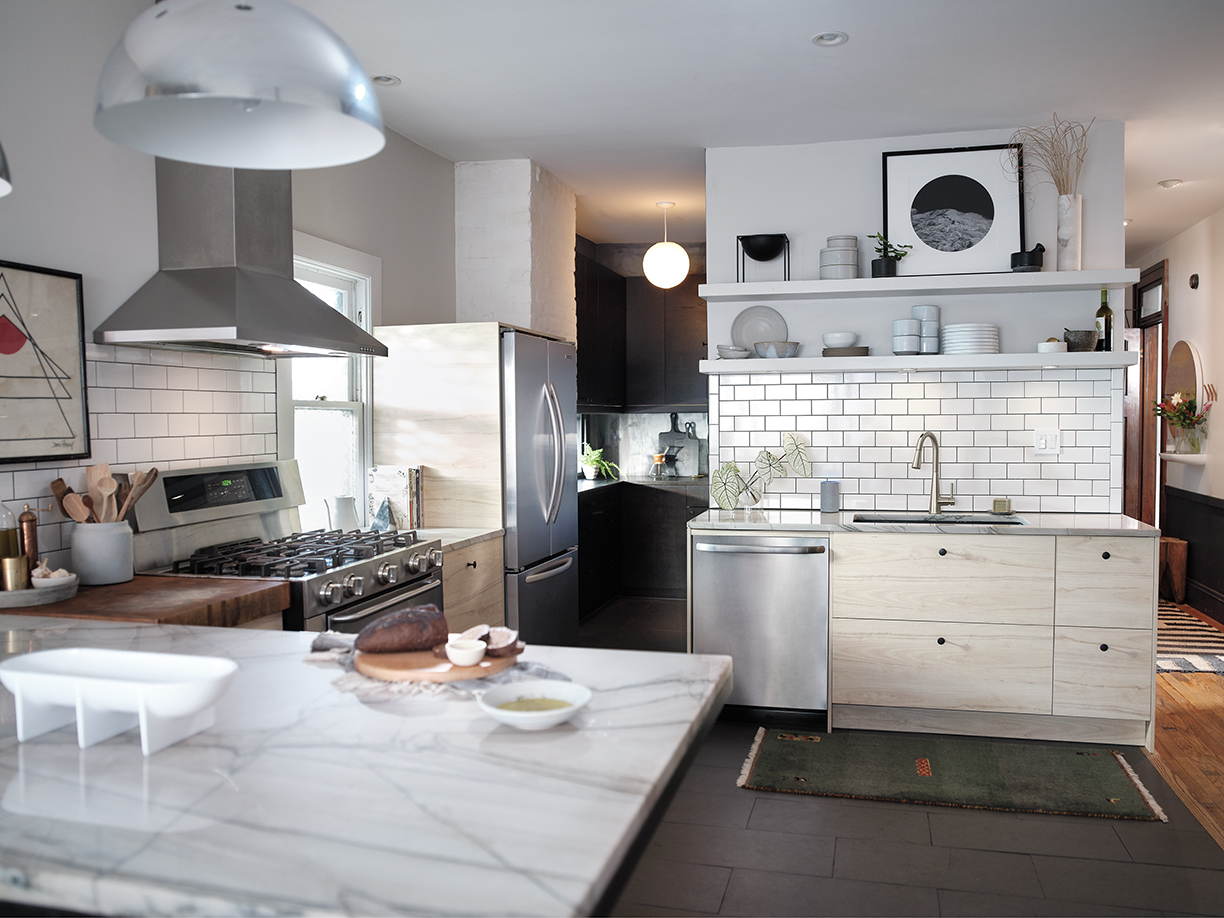
Almost a sous chef, innovative, hands-free faucets such as U by Moen fill pots with exact amounts of hot or cold water or anything in between.
Seemingly overnight, touchless faucets, easy-open drawers and an ever-growing array of kitchen tech morphed from “nice-to-have” amenities to “must-haves” as the desire for cleanliness and safety eclipsed convenience.
Indoor air quality, purified water and clean surfaces rank high with consumers. Before the pandemic, interest in wellness at home was on the rise; now, amenities that bring a hygienic benefit, particularly in the kitchen, top wellness demands. A desire for simplification with easy-to-clean cabinets and counters along with healthy living are micro themes expected to steer product development and design in the future, according to the National Kitchen and Bath Association.
Even trusted materials such as wood, cork and brass are now considered for their capacity to shed germs or resist contamination. “All our faucets are solid brass construction and therefore, by the very nature of the metal, have additional antimicrobial properties,” points out Noah Taft, senior vice president of marketing and sales at California Faucets, noting the benefit of brass over less costly materials
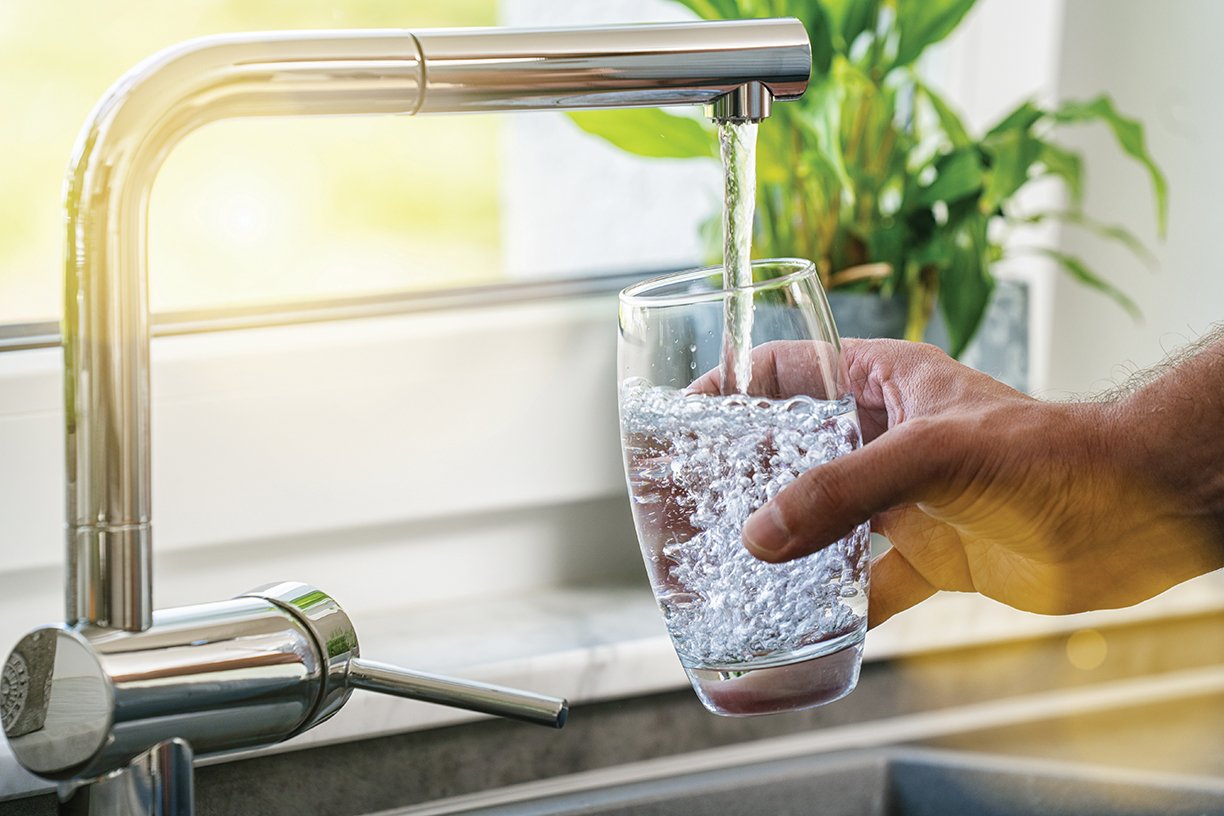
Pure Water
As the desire for healthy homes builds, so does interest in water quality. Filtration has become an important focus, according to experts at Kohler, who say more than 75 percent of customers already take measures to filter their drinking water. In January, Kohler introduced a four-stage reverse osmosis purification system designed to fit in the cabinet under the kitchen sink. The system reduces contaminants, including lead, mercury, chlorine, bacteria, virus, arsenic, copper, fluoride and more. With a capacity of 27.5 gallons per day, it would replace approximately 200, 16.9 oz. bottles of water.
Water Appliance
Sinks used to be, well, just sinks, until Rohl and other manufacturers elevated the status to “water appliance.” According to estimates, the kitchen sink used to be frequented 10 to 30 times a day. Now, after weeks of sheltering at home and a hyper-focus on handwashing, the sink is getting more use than ever and receiving lots of scrutiny regarding design, ease of use and even appearance.
“Kitchen sinks and faucets are on the front lines of keeping a home clean and safe — used continuously for food preparation, hand and dishwashing,” says Edyta Drutis, director, brand and communications, at Blanco North America. Blanco’s Silgranit stone-like sink material is nonporous, resistant to stains, scratches, chips, acid and heat. Acting as a shield against dirt and contaminants, it reduces bacterial growth by 98 percent. The hydrophobic surface pushes away dirt and water, so it drains easily and cleans with soap and water or baking soda.
When it comes to sinks, bigger continues to be better. Even before the pandemic, experts at the National Kitchen and Bath Association noted increased demand for large sinks to accommodate tasks as diverse as washing fresh produce and jumbo pans, to babies and the
occasional pup.
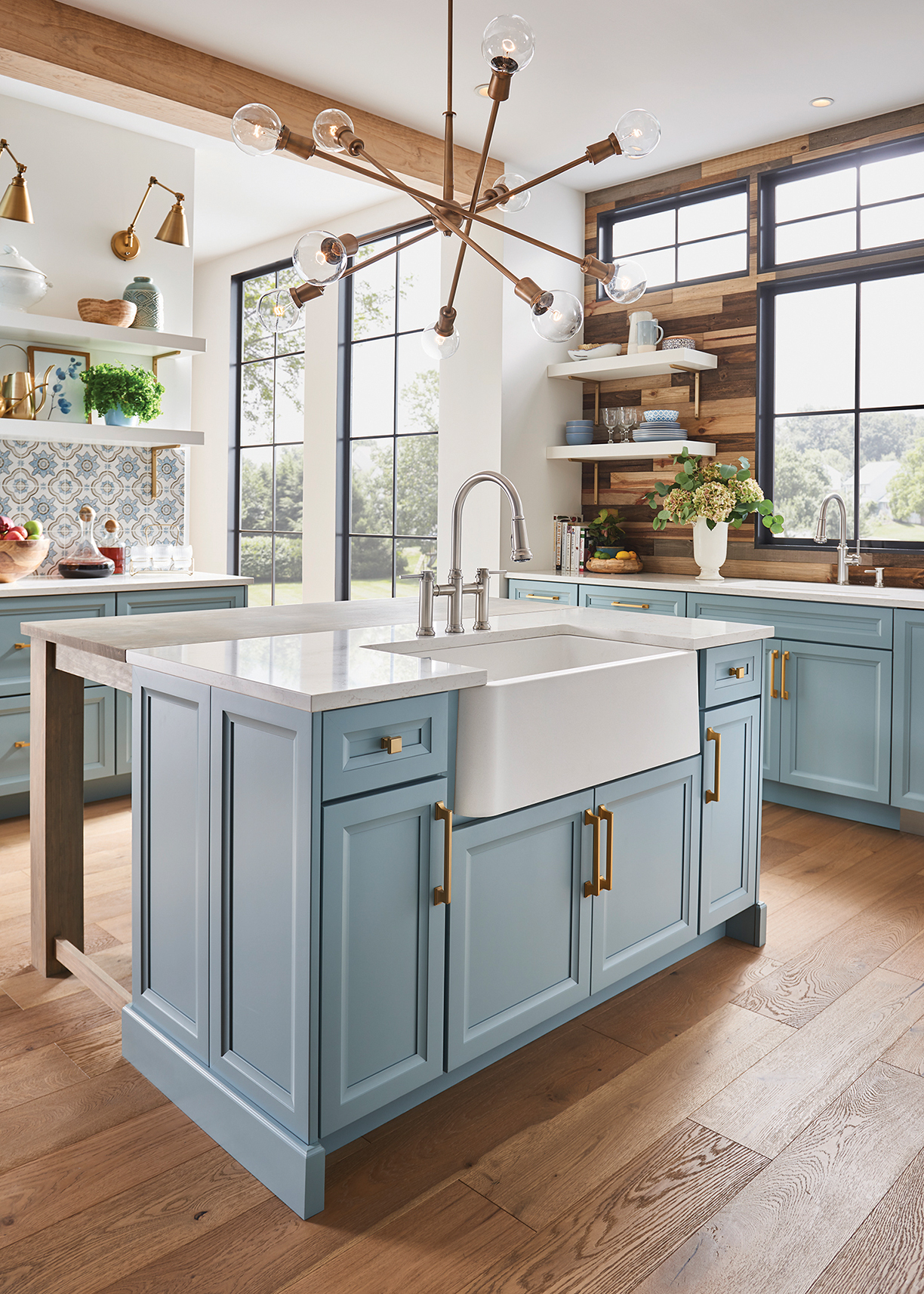
More Power Per Drop
Look for faucets designed to do more than deliver water. Lenova introduced a model that takes washing produce or the dog’s bowl to the next level by integrating ozone into the flow. Recognized as a safe, non-toxic way to kill viruses, bacteria, mold, yeast and algae within seconds of contact, aqueous ozone has been extensively tested and clinically proven, according to Lenova. Not only does it sanitize surfaces, but it can be used to wash produce, and it even removes pesticides.
Adding more cleaning power to each drop, particularly for sprays, is another objective for manufacturers. Kohler recently introduced options such as a faucet sprayer with nozzles aligned to create a forceful blade of water to sweep away stuck-on food. Another, a soft spray, preps berries without bruising. Moen optimized its sprays to deliver 50 percent more spray power while containing the splash — great for messy pots and messy hands.
Look Ma, No Hands!
Touch-free faucets have been around for a few years. In the first versions, sensors would activate the flow in response to a motion. Then, voice control was added. The most recent innovation enables homeowners to activate faucets via Alexa or Google Home. Turning the water on and off is only part of what U by Moen — a Best of KBIS 2020 winner — delivers. Instead, it can fill a baby bottle with just the right amount of water at the right temperature or load a pasta pot with precisely four quarts of hot water, freeing the cook for other tasks. Metered dispensing ranges from one tablespoon to 15 gallons, and temperature commands can be exact degrees or merely hot or cold. “Baby bottle” and other customizable presets simplify commands.
Hard As Glass
“Glass tiles are not porous and do not possess characteristics that allow or promote the growth or life of microbes, bacteria, or germs,” explains Jim Stevens, brand manager for Lunada Bay Tile. “Keep in mind that the grout between each tile is porous and does not have these same characteristics. However, grout is usually set down, below the top surface of the tiles, so direct contact is less likely. And grout could be sealed with an antimicrobial sealer to create a safe and sanitary surface.”
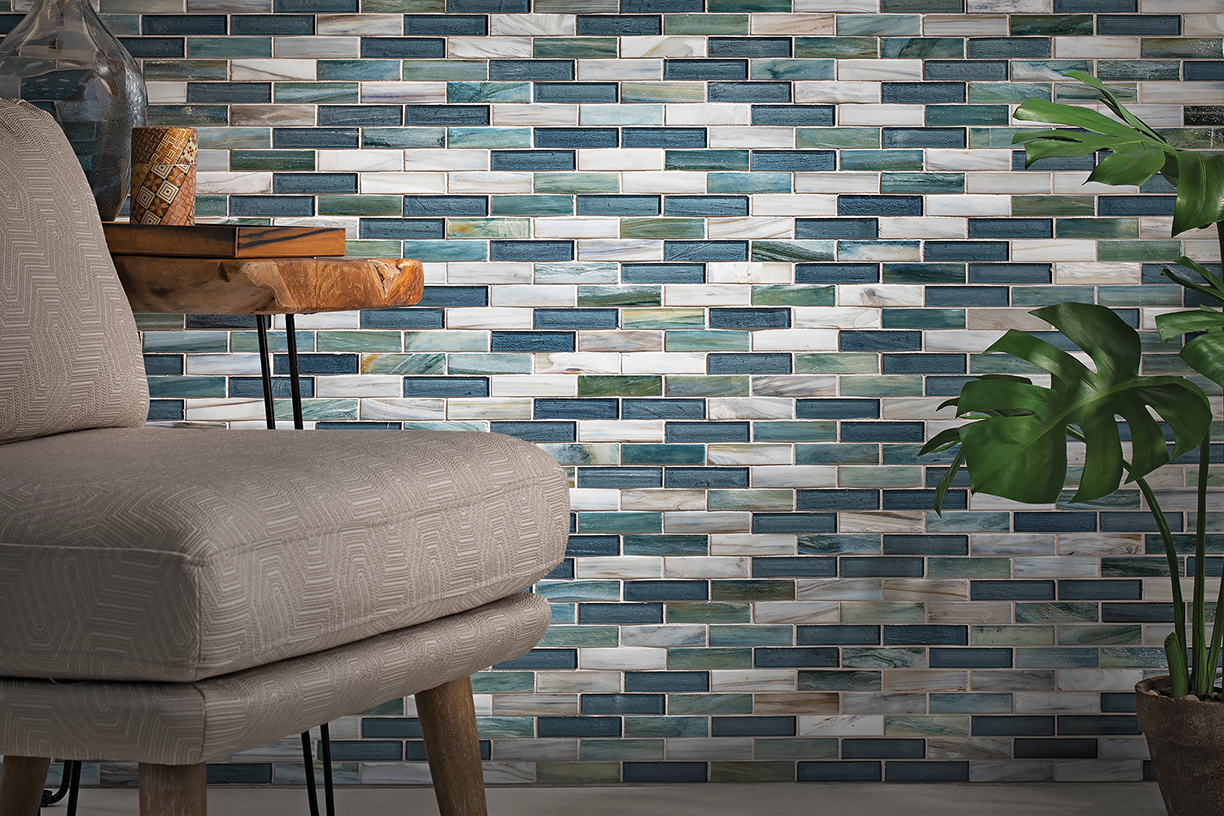
Glass tiles, which are nonporous, also mesmerize.
With Spring just around the corner, now is the perfect time to swing into health and wellness. Envisioning and reflecting on your health goals is a breeze when your home supports and sustains your best self. Wellness themed homes are the perfect balance between comfort and functionality, blurring the lines between a relaxing, replenishing vacation and a regular Thursday night.
Christie’s International Real Estate showcases five beautiful home retreats that are sure to make returning home after a long day as anticipated as jetting off to a luxurious retreat.
Contemporary Mountain Retreat in Santa Fe, New Mexico
Nestled en route to the Santa Fe Ski Basin and miles of hiking/biking trails, this home makes wellness a top priority. Melt stress away in the private spa with a professional-grade gym and indoor hydrotherapy SwimEx pool, and wind down after a long day in the patio hot tub.
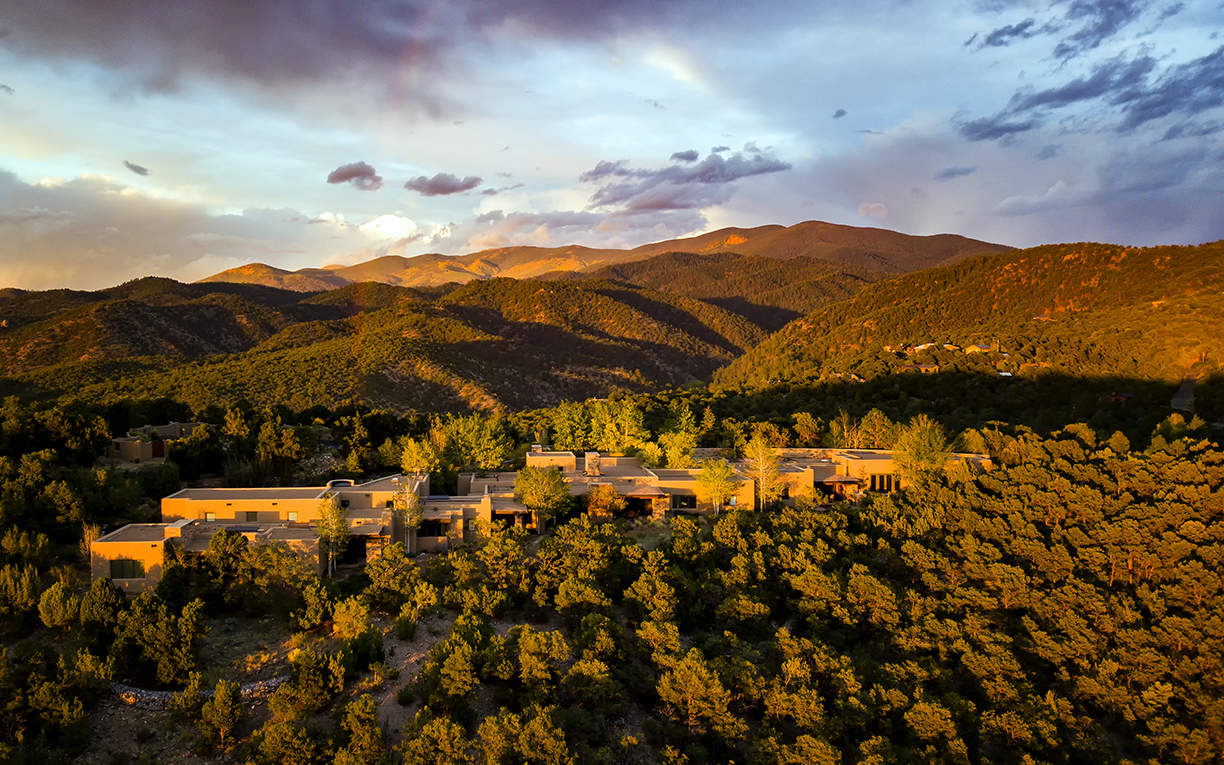
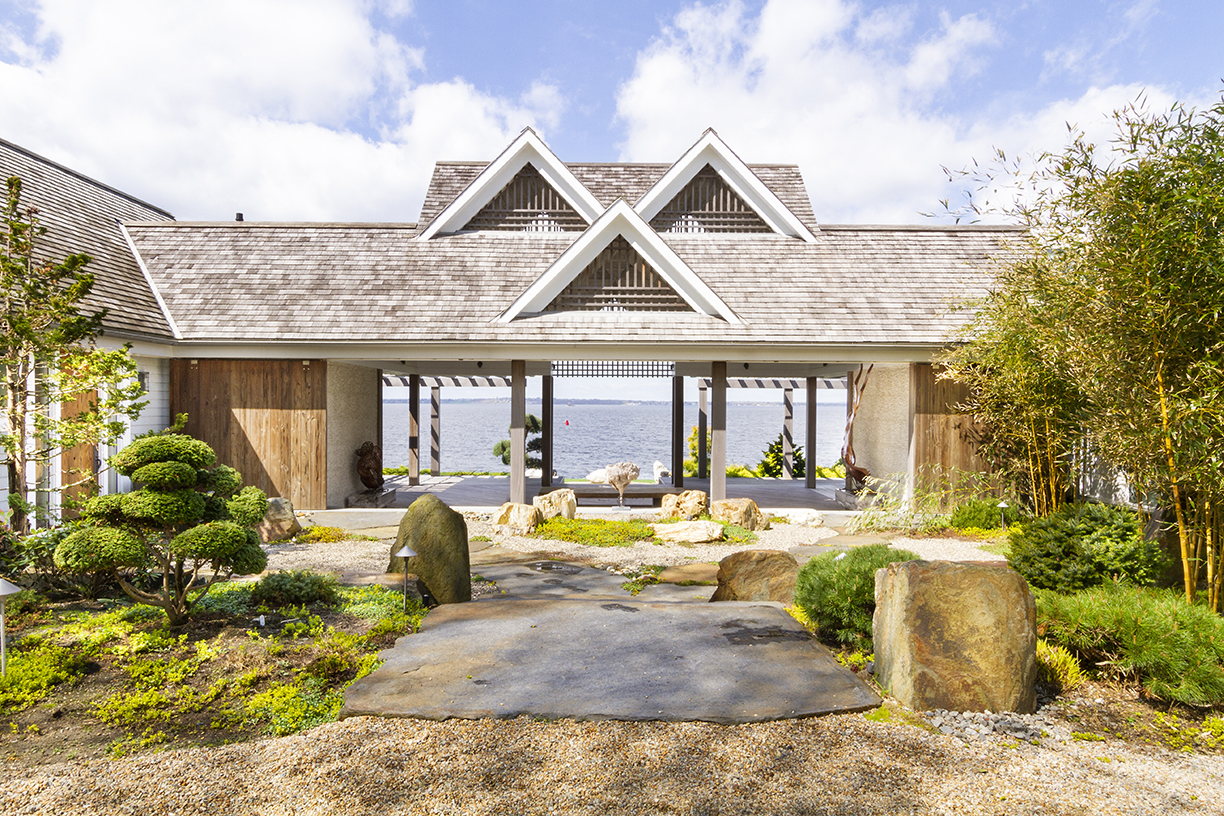
Shangri-La on Narragansett Bay in Bristol, Rhode Island
This idyllic waterfront estate was crafted for the outdoor enthusiast and molded for relaxation. Enjoy a sunset walk along the private beach, or evening swim in the heated infinity pool. A serene koi pond invites quiet meditation and reflection. Taking it easy at this quiet seaside retreat is a beach-lover’s dream come true.
Alhambra-Inspired Palace in Marrakesh, Morocco
Nestled in the Palmeraie oasis, this home features designs in the tradition of ancient Moorish baths, and includes an authentic hammam, beautiful relaxation area, a spa, and lounges. Outdoors, guests and residents can relax in the rose and vegetable gardens, a pool area with pool house, or tennis court.
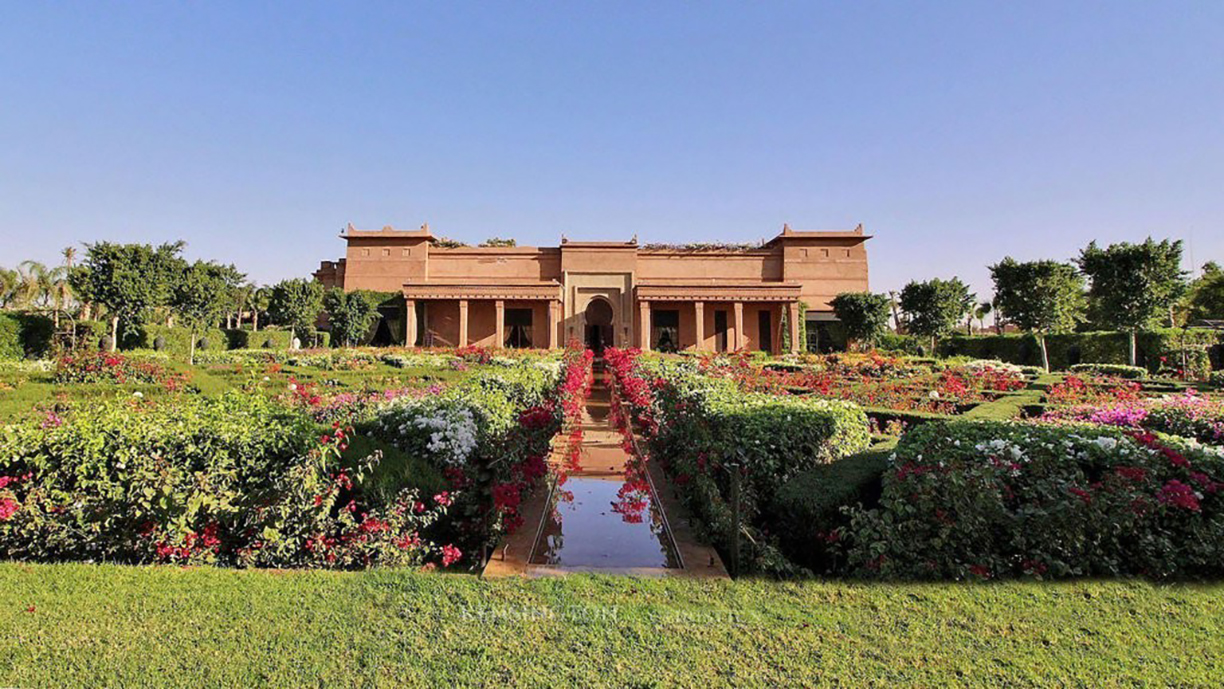

Hot Spring Estate in Ashigarashimo-Gun, Japan
This home is set in one of Japan’s ancient hot spring resorts, Yugawara. The home’s lavish spa amenities include both indoor and outdoor onsen (hot spring) baths, celebrating Yugawara’s rich history as a prominent hot spring, and providing the utmost relaxation.
River Oaks Estate in Houston, Texas
This estate offers ample opportunity for both fitness and relaxation. Achieve healthy eating goals in the custom-designed chef’s kitchen, and exercise in the professionally equipped gym and sauna housed on the top floor. Outside, a pool, tennis court, and practice golf course make fitness and wellness goals a reality.

Photos and featured image courtesy of Christie’s International Real Estate
A home is a true reflection of a person’s lifestyle. Crystal Pointe, nestled among the Lake Tahoe landscape in Nevada, is no exception.
“It’s built in harmony with this environment and is in the contour of the land,” says Susan Lowe, vice president and corporate broker with Chase International Luxury Real Estate. With over 16,000 square feet, Crystal Pointe offers stunning views of the lake throughout, with the main foyer featuring large floor-to-ceiling windows and absolute privacy all-around.
In essence, the home is meant to incorporate the beauty and elements that Lake Tahoe encompasses. From the hand-carved cedar beams to the outside fire pit and waterfall, the home puts Lake Tahoe’s outdoors on display while linking people to the area’s nature and spiritual lands.
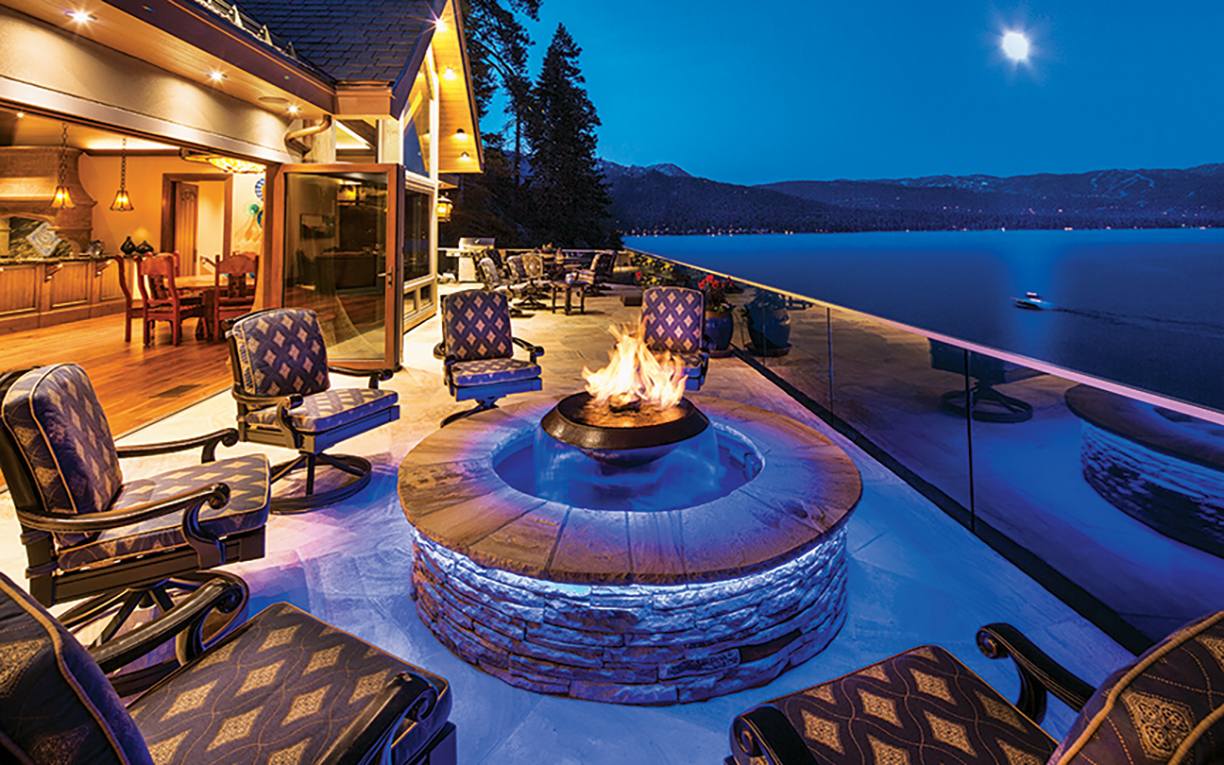
Crystal Pointe’s waterfront guesthouse.
“The connection to Mother Earth through the water, through the sun and the essence of our souls is found in this property,” says Shari Chase, president, CEO and luxury specialist of Chase International Luxury Real Estate. “The property takes into consideration all the elements of the surrounding land and the stunning views of Lake Tahoe.”
The two funiculars on the property provide a 360-degree view of the sugar pine trees, bald eagles and cascading land that envelope the property. A continuation of the main residence, the beach house, sits further down the mountain, allowing for direct access to the lake below. The crisp air breathes into the beach house through the deck that connects to the main level, bringing the outside in. The dining area features a 2,400-year-old alligator juniper tree table, while fossils scattered in the sandstone flooring add finishing touches to this spectacular addition.
Crystal Pointe embodies the lushness and vibrancy of Lake Tahoe and pays homage to the unrefined environment. Put simply by Chase, this home is for “people looking to enhance the quality of their life.” Crystal Pointe is listed at $75 million.
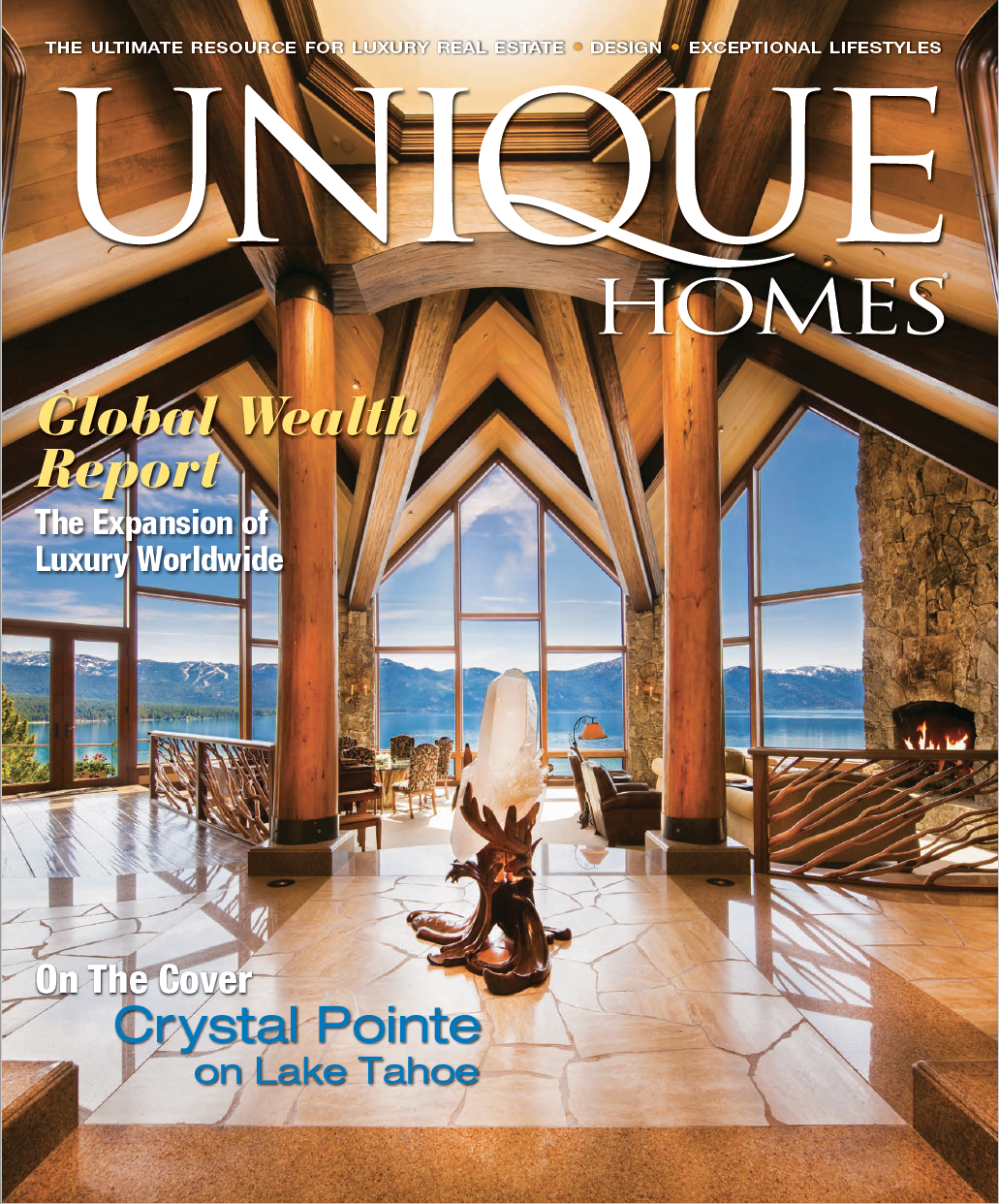
This editorial appeared in Unique Homes Global ’19 Issue.
Wellness may be a hot topic, but not everyone is sure what it means.
Every year one topic seems to dominate real estate. This year it’s wellness. Yet, if you ask designers and architects what comprises wellness in he home you are apt to get a variety of responses ranging from connections to nature to spaces for meditation or yoga to air quality. Some might point to certifications such as Wellness Within Your Walls or the WELL Building Standard or biophilic design. Others say LEED and other green certifications address wellness.
“I think health and wellness is still in the ‘public education’ stage of what it means. All last year you’re hearing it more and more and more. But I still think it’s educating the designer,” and the public, says Beverly Hills designer Christopher Grubb, president of Arch-Interiors Design Group. Designers often understand the term as it applies to LEED accreditation or to aging in place, but not necessarily the overall concept.
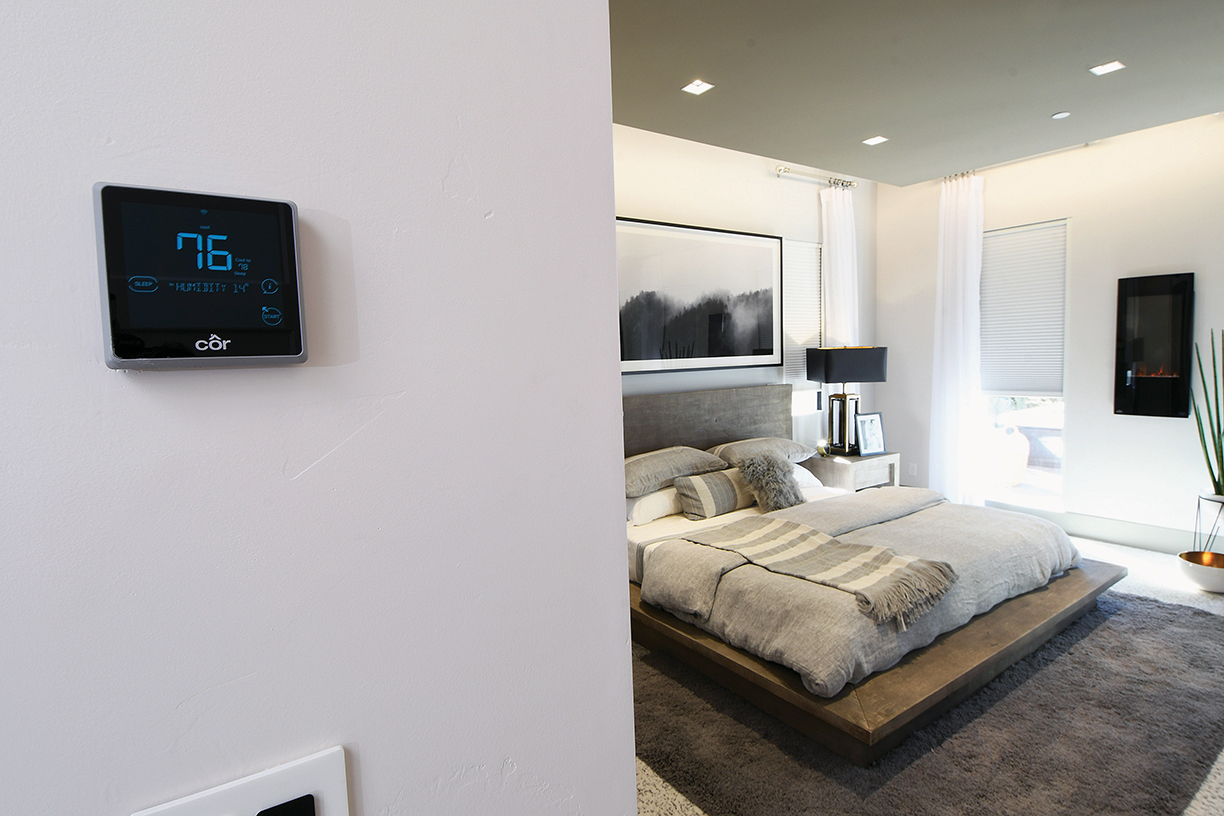
“It might mean one thing to one person and something else to another,” says designer Allie Mann with Case Architects and Remodelers in Washington, D.C., noting that some might be caught up in the movement without fully understanding it.
“I think that this is really being driven by a lot of consumer behavior. When it comes to the builder-developer world, I think our consumers are much more educated. I think they know what they want. They just don’t know how to get there,” says Angela Harris, creative director and principal of TRIO, an award-winning, market-driven, full-service interior design firm in Denver.
“Health and wellness is a new frontier for all of us, says Jacob Atalla, vice president of sustainability for KB Home. KB Home, along with Hanley Wood, KTGY Architects and Delos, a tech and wellness company, created a concept home outside of Las Vegas in Henderson, Nevada, to illustrate what a home designed with wellness as a core value looks like and how it functions. “It is the home story of the future,” he says.
Even though wellness seems to have suddenly burst onto the housing scene in the last year, the idea of connecting home to health is not new. More than 20 years ago, health issues potentially linked to building materials and toxic conditions such as black mold gained attention, giving rise to the term sick building syndrome. Since then, awareness of the relationship between the built environment and health has been growing. A decade ago, new technologies led to the development of products that either reduced the level of toxic contaminants released into the indoor ecosystem or scrubbed the air of VOCs (volatile organic compounds). Other concerns about noise, water and connections with the natural environment were also beginning to surface. At the same time, health and wellness was becoming an important value for consumers worldwide, expanding beyond fitness to include personalized medicine, mind-body connections, spa, wellness tourism and also the built environment.
By 2015, wellness had morphed into a $3.7 trillion industry worldwide, according to the Global Wellness Institute, and climbed an additional 6.4 percent annually to reach $4.2 trillion in 2017. One of the fastest growing sectors in the wellness space is a category called Wellness Lifestyle Real Estate, which includes everything in the built environment that incorporates wellness elements in design, construction, amenities and service. In addition to physical well-being, wellness real estate also addresses social wellness and mental, emotional and spiritual wellness.
The biggest difference between homes designed to promote wellness and homes that address air quality or other environmental factors that impact physical health is that wellness is integral to the design and permeates every aspect of the home from floor plan to amenities. “Overall you are programming the home to be more livable,” says Harris.
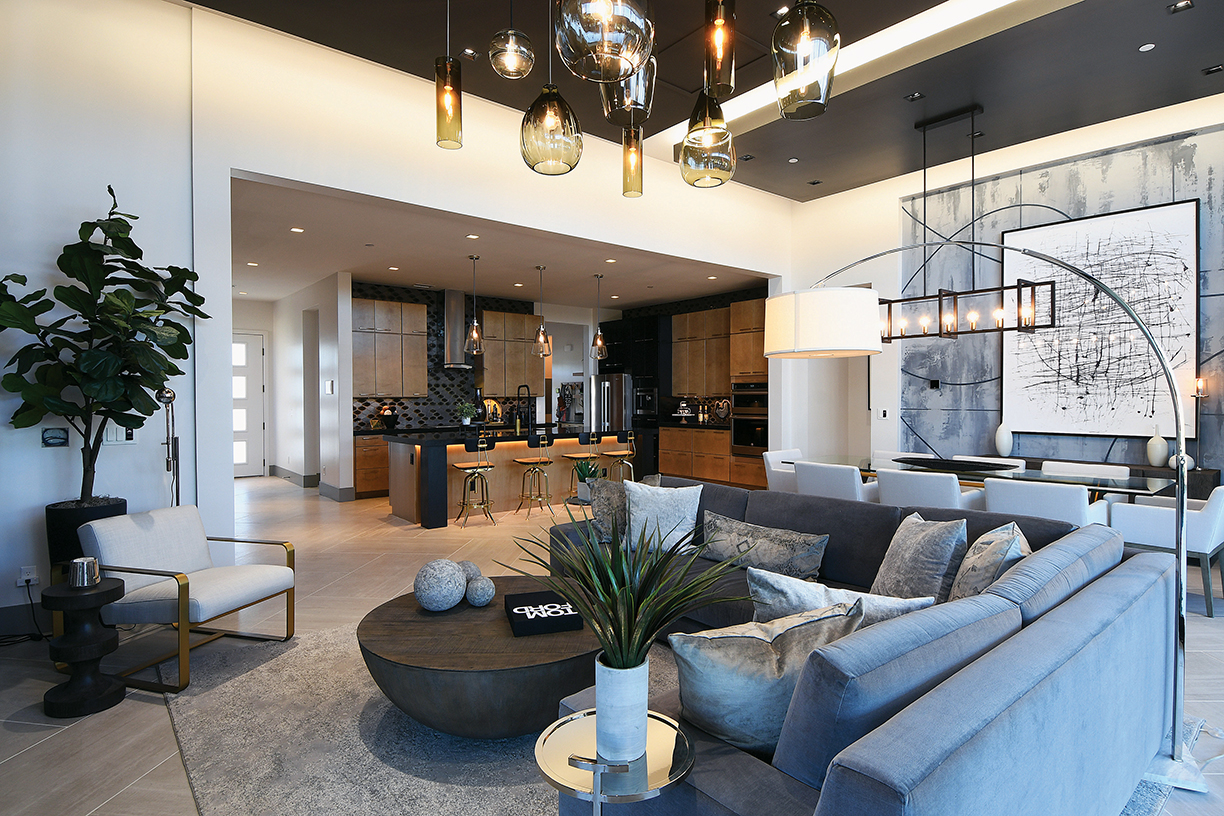
Frustrated by the lack of attention to the ways in which indoor environments influence health, Phil Scalia, a former partner at Goldman Sachs, founded the initiative that eventually became Delos, which has been on the forefront of wellness in the built environment for more than 10 years. In 2014, Delos established the WELL Building Standard, which was initially applied to commercial buildings. Over 1,200 projects in 45 countries, across over 250 million square feet of commercial real estate, fall under the WELL umbrella. The WELL standard focuses on seven categories of building performance: air, water, nourishment, light, fitness, comfort and mind. Additionally, it takes connections between a building and the surroundings into consideration.
During groundbreaking work on EcoManor, the first LEED Gold certified single-family residence in the U.S., designer Jillian Pritchard Cooke discovered that both consumers and design and construction professionals lacked accurate information on how to reduce toxins in the interior environment. That was the inspiration for Wellness Within Your Walls, another wellness certification that offers education on building and designing healthier interior environments. The focus is on materials both for construction and also furnishings and finishes.
Another more recent wellness initiative centers around the principles of biophilic design and the benefits of bringing natural elements into buildings. In 2016, Amanda Sturgeon, a biophilic design expert and CEO of the International Living Future Institute spearheaded the Biophilic Design Initiative. In addition to designers, builders and architects, current proponents include tech companies who have added natural elements to buildings to increase productivity and reduce stress for workers.
This year, it’s fair to say wellness is coming home as attention shifts from commercial to residential applications. The KB ProjeKt Home takes wellness in residential structures to the next level. Not only are established practices regarding connections with the outdoors, indoor toxins and air quality embedded in the design, but a synergy with smart home tech transforms wellness from a passive attribute into one that is active.
“The motivation was to examine how we can make the home healthier and at the same time how do we engage that home in partnering with the occupants, with the people living in it, to enhance their health and wellness or engage them in making the environment they live in better. We know that about 90 percent of our lives are spent indoors, and a lot of that indoor living is in your own home,” Atalla explains. Recent research from Hanley Wood shows that homeowners believe housing is essential or extremely important to good health, and two-thirds say the right housing environment could cut annual medical costs by 40 percent.
Central to the home’s wellness quotient is an innovative smart system, dubbed DARWIN, developed by Delos. This first of its kind, home wellness intelligence network constantly monitors the home environment and interacts with and adjusts systems in the home as needed. A network of sensors built into the walls — there are nine in the ProjeKt Home — constantly tests air quality.
If it detects problems with air quality, containments or chemicals from everyday products, DARWIN directs the climate control systems to bring more fresh air to that room. Water quality is also monitored, and purified water is delivered to every fixture in the home. “You have a wellness intelligence system that is constantly doing things on your behalf to increase your wellbeing,” says Atalla.
The system also monitors the plumbing system and alerts homeowners to leaks. Sleep is an important wellness component and the master bedroom in this home is primed to promote slumber. Special noise-damping drywall ensures quiet. Motorized shades block out exterior light. “Total quietness, total darkness, and circadian rhythms help you sleep,” adds Atalla.
Lighting is another mainstay of wellness formulas, both natural light from large windows and expanses of glass as well as interior lighting keyed to circadian rhythms. DARWIN adjusts lights to match the time of day. But what makes this function more worthwhile is the homeowner can change the lighting to produce a desired effect, which means the lights can create an energizing morning environment even if morning comes at 5 a.m. on a stormy day.
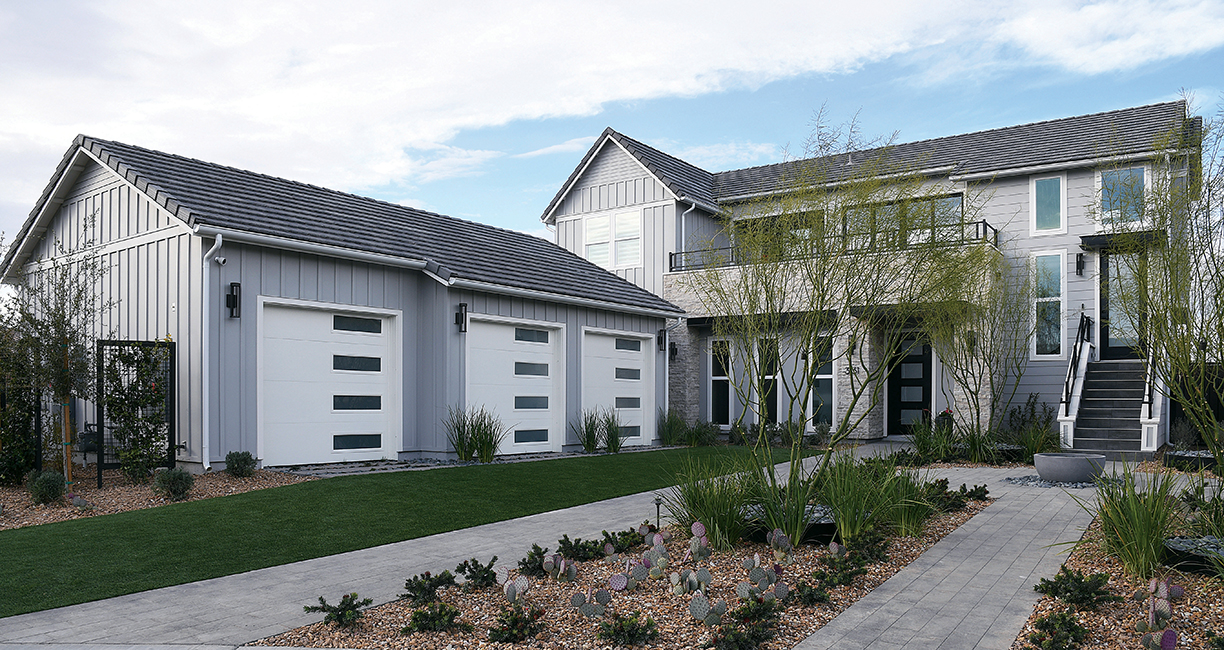
A living garden wall enables the home to grow herbs and microgreens. Turning the home and kitchen into a place to produce healthy food is an emerging area of innovation for kitchens.
Social interaction is another wellness component, and community design increasingly takes social interaction into account with spaces such as walking trails, parks and coffee houses designed to encourage interaction and encounters among residents as part of everyday life.
It might seem like a big jump to add wellness to typical new homes, particularly production homes, but Atalla says the KB ProjeKt Home is an example of what can be done. Additionally, Harris says it’s often an easy tweak to add features such as water filtration in the kitchen and master bath. “That doesn’t cost a whole lot. And again, I think it’s just about livability and how you’re programming your floor plan to be more livable.”
Looking ahead, most research points to continued growth of the wellness economy, with new initiatives approaching wellness from the perspective of design, construction, materials and function. There are now more than 740 wellness real estate and community developments built or in development across 34 countries — a number that grows weekly according to the Global Wellness Institute.
Right now, the $134 billion wellness real estate market is about half the size of the global green building industry and projections call for the pace to continue. “But the wellness market isn’t just growing, it’s extremely dynamic. We believe that the three sectors that represent the core spheres of life will see the strongest future growth — wellness real estate, workplace wellness and wellness tourism — while other sectors will also grow as they support the integration of wellness into all aspects of daily life,” says Ophelia Yeung, senior research fellow, GWI.














